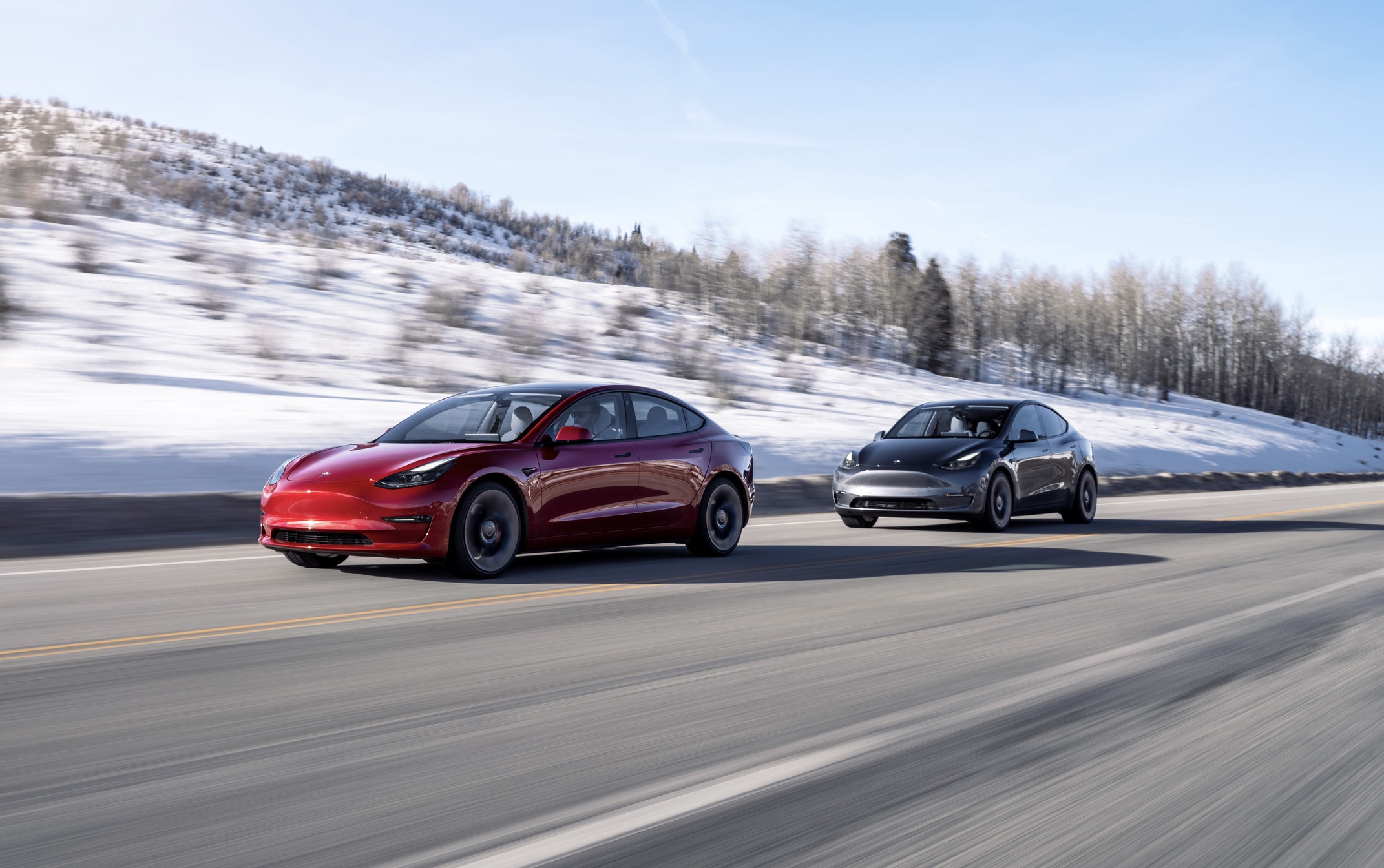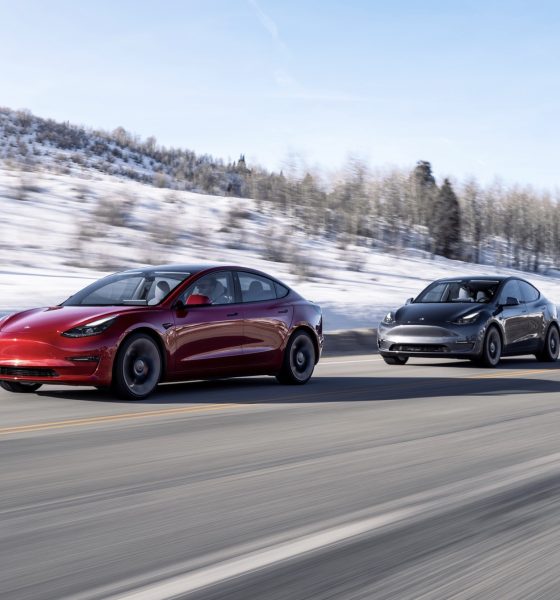Update:
Earlier this month, Teslarati reached out to the Canadian office for a comment on the possibility of a Tesla Gigafactory in Canada.
Minister Champagne’s spokesperson didn’t comment directly on the possibility of a Tesla Gigafactory in Canada. However, she emphasized that Canada was working to ensure its auto industry’s future.
“We know how important the auto industry is to the Canadian economy and to the hundreds of thousands of Canadian workers in this sector. That’s why Minister Champagne has worked tirelessly to secure the future of Canada’s auto industry, including bringing more companies to Canada and the entire electric vehicle ecosystem. This includes announcements with LGES / Stellantis in Ontario, GM / POSCO and BASF in Quebec, Umicore, GM and Brightdrop, and many others,” she told Teslarati reporter Johnna Crider.
“It is good to see that our government’s investments are attracting the attention of automakers and companies from around the world. We will continue to do everything to ensure that Canadians can benefit from the global transition to electric vehicles.”
One of these investments includes Stellantis’ plans to invest $3.8 billion CAD in its Windsor and Brampton (Ontario) assembly plants. BASF also has plans for its battery materials and recycling facility in Bécancour, Quebec.
Original Article Below:
Tesla talked with Canada’s Minister of Innovation, Science and Industry Francois-Philippe Champagne (FPC) about its potential supply chain expansion plans in the country.
The Canadian Minister visited Tesla’s facility in Markham for the talk. Champagne also took a tour and test drive at Tesla Canada’s Markham site. In a tweet, he also revealed that all Tesla cars have “a piece of Canada” in them.
Minister Champagne was talking about Tesla’s Markham facility and how it contributes to the company’s manufacturing efforts. Tesla Canada’s Markham site produces some machines installed in the company’s gigafactories worldwide. According to Mayor Frank Scarpitti of Markham, Tesla Canada makes “state-of-the-art manufacturing equipment” for Tesla gigafactories “in the production of batteries.”
Tesla Canada Gigafactory
There’s been a lot of talk lately about a Tesla Canada Gigafactory. In June, Tesla was reportedly considering locations in North America for its next plant. It was looking at options in Canada, Mexico, and the United States.
At the recent 2022 Shareholders Roundup, Elon Musk announced that Tesla might announce the location of its next gigafactory later this year. Musk asked the crowd where they thought Tesla should build a factory, and Canada seemed to be a top choice.
“I’m half Canadian, so maybe I should,” Musk jokingly told the crowd.
Tesla and the Inflation Reduction Act
Given Minister Champagne’s tweet, Tesla might plan to strike a supply chain deal for battery production in Canada. According to Natural Resources Canada (NRCAN)—a government department—the country “is a key global producer of copper, nickel, and cobalt.” Canada also hosts advanced mineral projects for lithium, graphite, and vanadium.
U.S. President Joe Biden recently signed the Inflation Reduction Act, which will go into effect on December 31, 2022. The law includes battery requirements the EV automakers must meet to qualify for EV tax credits. In the short term, the law requires at least 40% of materials used in batteries to be sourced from North America or a U.S. trading partner by 2024. The requirement will increase to 100% by 2029.
Currently, Tesla does not qualify for EV tax credits because it hit the 200,000 cap under the old system. However, once the Inflation Reduction Act takes effect, some Tesla vehicles would qualify for the EV tax credits—provided that the company follows the battery requirements.
The Teslarati team would appreciate hearing from you. If you have any tips, contact me at maria@teslarati.com or via Twitter @Writer_01001101.

Elon Musk
Elon Musk and Tesla AI Director share insights after empty driver seat Robotaxi rides
The executives’ unoccupied tests hint at the rapid progress of Tesla’s unsupervised Robotaxi efforts.

Tesla CEO Elon Musk and AI Director Ashok Elluswamy celebrated Christmas Eve by sharing personal experiences with Robotaxi vehicles that had no safety monitor or occupant in the driver’s seat. Musk described the system’s “perfect driving” around Austin, while Elluswamy posted video from the back seat, calling it “an amazing experience.”
The executives’ unoccupied tests hint at the rapid progress of Tesla’s unsupervised Robotaxi efforts.
Elon and Ashok’s firsthand Robotaxi insights
Prior to Musk and the Tesla AI Director’s posts, sightings of unmanned Teslas navigating public roads were widely shared on social media. One such vehicle was spotted in Austin, Texas, which Elon Musk acknowleged by stating that “Testing is underway with no occupants in the car.”
Based on his Christmas Eve post, Musk seemed to have tested an unmanned Tesla himself. “A Tesla with no safety monitor in the car and me sitting in the passenger seat took me all around Austin on Sunday with perfect driving,” Musk wrote in his post.
Elluswamy responded with a 2-minute video showing himself in the rear of an unmanned Tesla. The video featured the vehicle’s empty front seats, as well as its smooth handling through real-world traffic. He captioned his video with the words, “It’s an amazing experience!”
Towards Unsupervised operations
During an xAI Hackathon earlier this month, Elon Musk mentioned that Tesla owed be removing Safety Monitors from its Robotaxis in Austin in just three weeks. “Unsupervised is pretty much solved at this point. So there will be Tesla Robotaxis operating in Austin with no one in them. Not even anyone in the passenger seat in about three weeks,” he said. Musk echoed similar estimates at the 2025 Annual Shareholder Meeting and the Q3 2025 earnings call.
Considering the insights that were posted Musk and Elluswamy, it does appear that Tesla is working hard towards operating its Robotaxis with no safety monitors. This is quite impressive considering that the service was launched just earlier this year.
Elon Musk
Starlink passes 9 million active customers just weeks after hitting 8 million
The milestone highlights the accelerating growth of Starlink, which has now been adding over 20,000 new users per day.

SpaceX’s Starlink satellite internet service has continued its rapid global expansion, surpassing 9 million active customers just weeks after crossing the 8 million mark.
The milestone highlights the accelerating growth of Starlink, which has now been adding over 20,000 new users per day.
9 million customers
In a post on X, SpaceX stated that Starlink now serves over 9 million active users across 155 countries, territories, and markets. The company reached 8 million customers in early November, meaning it added roughly 1 million subscribers in under seven weeks, or about 21,275 new users on average per day.
“Starlink is connecting more than 9M active customers with high-speed internet across 155 countries, territories, and many other markets,” Starlink wrote in a post on its official X account. SpaceX President Gwynne Shotwell also celebrated the milestone on X. “A huge thank you to all of our customers and congrats to the Starlink team for such an incredible product,” she wrote.
That growth rate reflects both rising demand for broadband in underserved regions and Starlink’s expanding satellite constellation, which now includes more than 9,000 low-Earth-orbit satellites designed to deliver high-speed, low-latency internet worldwide.
Starlink’s momentum
Starlink’s momentum has been building up. SpaceX reported 4.6 million Starlink customers in December 2024, followed by 7 million by August 2025, and 8 million customers in November. Independent data also suggests Starlink usage is rising sharply, with Cloudflare reporting that global web traffic from Starlink users more than doubled in 2025, as noted in an Insider report.
Starlink’s momentum is increasingly tied to SpaceX’s broader financial outlook. Elon Musk has said the satellite network is “by far” the company’s largest revenue driver, and reports suggest SpaceX may be positioning itself for an initial public offering as soon as next year, with valuations estimated as high as $1.5 trillion. Musk has also suggested in the past that Starlink could have its own IPO in the future.
News
NVIDIA Director of Robotics: Tesla FSD v14 is the first AI to pass the “Physical Turing Test”
After testing FSD v14, Fan stated that his experience with FSD felt magical at first, but it soon started to feel like a routine.

NVIDIA Director of Robotics Jim Fan has praised Tesla’s Full Self-Driving (Supervised) v14 as the first AI to pass what he described as a “Physical Turing Test.”
After testing FSD v14, Fan stated that his experience with FSD felt magical at first, but it soon started to feel like a routine. And just like smartphones today, removing it now would “actively hurt.”
Jim Fan’s hands-on FSD v14 impressions
Fan, a leading researcher in embodied AI who is currently solving Physical AI at NVIDIA and spearheading the company’s Project GR00T initiative, noted that he actually was late to the Tesla game. He was, however, one of the first to try out FSD v14.
“I was very late to own a Tesla but among the earliest to try out FSD v14. It’s perhaps the first time I experience an AI that passes the Physical Turing Test: after a long day at work, you press a button, lay back, and couldn’t tell if a neural net or a human drove you home,” Fan wrote in a post on X.
Fan added: “Despite knowing exactly how robot learning works, I still find it magical watching the steering wheel turn by itself. First it feels surreal, next it becomes routine. Then, like the smartphone, taking it away actively hurts. This is how humanity gets rewired and glued to god-like technologies.”
The Physical Turing Test
The original Turing Test was conceived by Alan Turing in 1950, and it was aimed at determining if a machine could exhibit behavior that is equivalent to or indistinguishable from a human. By focusing on text-based conversations, the original Turing Test set a high bar for natural language processing and machine learning.
This test has been passed by today’s large language models. However, the capability to converse in a humanlike manner is a completely different challenge from performing real-world problem-solving or physical interactions. Thus, Fan introduced the Physical Turing Test, which challenges AI systems to demonstrate intelligence through physical actions.
Based on Fan’s comments, Tesla has demonstrated these intelligent physical actions with FSD v14. Elon Musk agreed with the NVIDIA executive, stating in a post on X that with FSD v14, “you can sense the sentience maturing.” Musk also praised Tesla AI, calling it the best “real-world AI” today.










